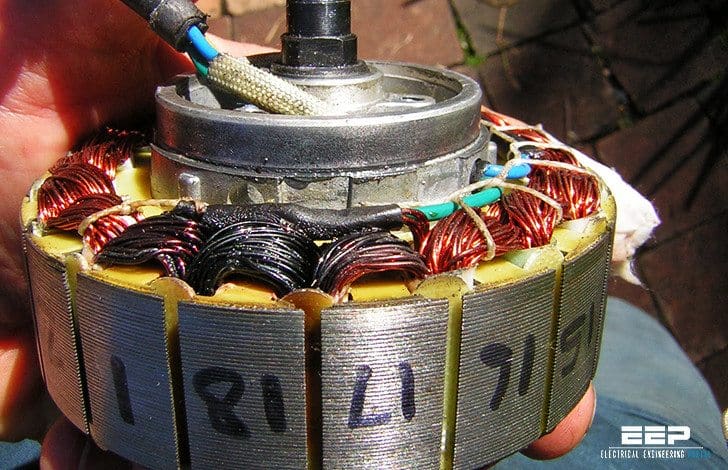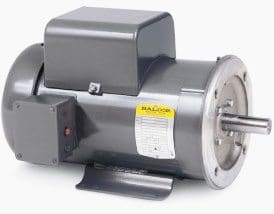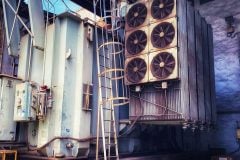Service life of a motor
Heat is the most common cause of motor failure before reaching rated service life.
Every increase of 10 degrees Centigrade of a motor’s windings above its design operating temperature cuts the life of the motor’s windings insulation by 50 percent, even if the overheating was only temporary.

Overheating arises from a number of factors. If a motor is undersized for an application, or if a manager selects a motor with the wrong starting current and torque characteristics, it will operate warmer than its design temperature. Managers should always match all motors to their connected loads.
While undersizing leads to overheating, oversizing lowers the application’s energy efficiency. A number of universal factors come into play when you deal with operating temperatures, no matter what the application.
These include:
- The electrical efficiency of the motor in question;
- The ambient temperature for which the motor is rated;
- The ambient temperature in which it will operate;
- The temperature rise the motor will undergo when it is working as well as its nameplate rated temperature rise;
- The class of electrical insulation with which the motor is made; and
- The motor’s service factor.
Hot environment
Another common cause of overheating is operating the motor in an environment with a high ambient temperature, which reduces the rate at which heat can be conducted from the motor.
This condition results in higher-than-rated winding temperatures and shortened service lives.
Technicians should it file temperature in areas where motors are installed, adding forced ventilation if temperatures exceed the ratings for a motor. Even if the ambient temperature is within the manufacturer’s guidelines, plugged air passage, blocked cooling fans, and dirty cooling vanes will result in elevated motor operating temperatures.
Managers should make sure technicians inspect motors at least annually to ensure that their cooling components are clear.

If the motor is enclosed (in a furnace, for example, or within a protective housing such as a pump housing), the ambient temperature that motor experiences is actually the temperature of the air immediately surrounding the enclosure. This suggests you will have to consider dissipating the temperature within the enclosure by passive or positive ventilation.
References:
- James Piper, Maintenance Solutions
- Beating the Heat, Century











I’m an Electrician .I love to learn and get refreshed with electrical knowledge..
I designed a purposely overbuilt motor, due to the application, and while I lost a few efficiency % points it made up for it temperature which increased overall life.
How can I find out which is the motor’s design operating temperature?
causes of single phase motor overheating.
The importance of the insulation of the flexible motor leads (selected to bear the designed short ckt. withstand capacity ) brazed from the wdgs. coming out of slots up to the motor terminal board/plate should not be neglected meant to bear lots of starts and stops that too some sustained period at low system voltage due to seasonal constrained ;so , unnoticed crack may remain unattended may cause quick insulation degradation /may lead to ultimate fault inside the motor due to corona effects causing flash over in windings near the core / overhang portion of the wdg. etc. So repairing /upgrading of the insulation will be required to enhance the expected balance life of the motors :even to see that if sustained system voltage is found lower due to seasonal constrains and shortage of power the to see for increase in on load /off load tap positions of the station auxiliary transformer for the period to avoid the extra strain on the motor winding /degradation of insulation due to run these at higher temperature .
The importance of the motor leads brazed from the wdgs. till it reaches to the terminal boards (overhang part insulation portion of the motor leads (flexible cables with due strength to bear the short ckt withstand capacity as per the capacity of the motor portion after use over the time have to bear lots of starts and stop should be given due importance ,unnoticed crack created remain unattended may cause quick insulation degradation /may lead to ultimate fault inside the motor efdue to corona effects and fault may cause flash over in winding /motor near the core and overhang portion of the wdg. etc.
Very informative, thanks. So that’s mean to inspect motor temperature we also have to know insulation class about the motor itself isn’t? Would you provide about insulation class motor related to temperature motor? Thanks.
First of all ,thank you so much for these efforts, would you kindly provide a comparison between oil immersed vs dry power transformers (up to rating 2 MVA 22 KV)
regards.
Magdy Tawfik
Muy interesante la trmperatura de régimen de algún motor donde averiguó y la altura del lugar de instalación como afecta en el rendimiento de un motor?